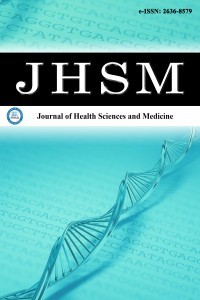1.
Azevedo RB, Botelho BG, Hollanda JVGD, et al. COVID-19and the cardiovascular system: a comprehensive review. J HumHypertens. 2021;35(1):4-11.
2.
Borlaug BA. Evaluation and management of heart failure withpreserved ejection fraction. Nat Rev Cardiol. 2020;17(9):559-573.
3.
McDonagh TA, Metra M, Adamo M, et al. 2021 ESC Guidelinesfor the diagnosis and treatment of acute and chronic heartfailure: developed by the Task Force for the diagnosis andtreatment of acute and chronic heart failure of the EuropeanSociety of Cardiology (ESC) with the special contribution ofthe Heart Failure Association (HFA) of the ESC. Eur Heart J.2021;42(36):3599-3726.
4.
John KJ, Mishra AK, Ramasamy C, George AA, Selvaraj V, LalA. Heart failure in COVID-19 patients: critical care experience.World J Virol. 2022;11(1):1.
5.
Zaccone G, Tomasoni D, Italia L, Lombardi CM, Metra M.Myocardial involvement in COVID-19: an interaction betweencomorbidities and heart failure with preserved ejection fraction.a further indication of the role of inflammation. Curr Heart FailRep. 2021;18(3):99-106.
6.
Türkoğlu C, Şeker T, Genç Ö, Yıldırım A, Topuz M. Therelationship between H 2 FPEF score and coronary slow flowphenomenon. Turk Kardiyol Dern Ars. 2022;50(4):242.
7.
Lang RM, Badano LP, Mor-Avi V, et al. Recommendations forcardiac chamber quantification by echocardiography in adults:an update from the American Society of Echocardiography andthe European Association of Cardiovascular Imaging. Eur HeartJ Cardiovasc Imaging. 2015;16(3):233-271.
8.
Reddy YN, Carter RE, Obokata M, Redfield MM, Borlaug BA. Asimple, evidence-based approach to help guide diagnosis of heartfailure with preserved ejection fraction. Circ. 2018;138(9):861-870.
9.
De Boer RA, Nayor M, DeFilippi CR, et al. Association ofcardiovascular biomarkers with incident heart failure withpreserved and reduced ejection fraction. JAMA Cardiol. 2018;3(3):215-224.
10.
Chitsazan M, Amin A, Chitsazan M, et al. Heart failure withpreserved ejection fraction in coronavirus disease 2019 patients:the promising role of diuretic therapy in critically ill patients.ESC Heart Fail. 2021;8(2):1610-1614.
11.
Baratto C, Caravita S, Parati G. Heart failure with preservedejection fraction and COVID-19: which comes first, the chickenor the egg? letter regarding the article ‘Heart failure withpreserved ejection fraction according to the HFA-PEFF score inCOVID-19 patients: clinical correlates and echocardiographicfindings’. ESC Heart Fail. 2021;23(12):2091.
12.
Mountantonakis SE, Saleh M, Fishbein J, et al. Atrial fibrillationis an independent predictor for in-hospital mortality inpatients admitted with SARS-CoV-2 infection. Heart Rhythm.2021;18(4):501-507.
13.
Pranata R, Lim MA, Huang I, Raharjo SB, Lukito AA.Hypertension is associated with increased mortality andseverity of disease in COVID-19 pneumonia: a systematicreview, meta-analysis and meta-regression. J Renin AngiotensinAldosterone Syst. 2020;21(2):1470320320926899. doi:10.1177/1470320320926899
14.
Pagnesi M, Baldetti L, Beneduce A, et al. Pulmonaryhypertension and right ventricular involvement in hospitalisedpatients with COVID-19. Heart. 2020;106(17):1324-1331.
15.
Sadeghi R, Toloui A, Pourhoseingholi A, et al. The prognosticvalue of echocardiographic findings in prediction of in-hospital mortality of COVID-19 patients. Frontiers Emerg Med.2021;5(4):e38.
16.
Palaiodimos L, Kokkinidis DG, Li W, et al. Severe obesity,increasing age and male sex are independently associated withworse in-hospital outcomes, and higher in-hospital mortality,in a cohort of patients with COVID-19 in the Bronx, New York.Metabol. 2020;108:154262.
17.
Wu C, Chen X, Cai Y, et al. Risk factors associated with acuterespiratory distress syndrome and death in patients withcoronavirus disease 2019 pneumonia in Wuhan, China. JAMAIntern Med. 2020;180(7):934-943.
18.
Gallo Marin B, Aghagoli G, Lavine K, et al. Predictors ofCOVID-19 severity: a literature review. Rev Med Virol.2021;31(1):1-10.
19.
Yang J, Zheng Y, Gou X, et al. Prevalence of comorbidities andits effects in patients infected with SARS-CoV-2: a systematicreview and meta-analysis. Int J Infect Dis. 2020;94:91-95.
20.
Liu Y, Sun W, Guo Y, et al. Association between plateletparameters and mortality in coronavirus disease 2019:retrospective cohort study. Platelets. 2020;31(4):490-496.
21.
Huang I, Lim MA, Pranata R. Diabetes mellitus is associatedwith increased mortality and severity of disease in COVID-19pneumonia-a systematic review, meta-analysis, and meta-regression. Diabetes Metab Syndr. 2020;14(4):395-403.
22.
Li L, Zhang S, He B, Chen X, Wang S, Zhao Q. Risk factorsand electrocardiogram characteristics for mortality in criticalinpatients with COVID-19. Clin Cardiol. 2020;43(12):1624-1630.
23.
Toraih EA, Elshazli RM, Hussein MH, et al. Associationof cardiac biomarkers and comorbidities with increasedmortality, severity, and cardiac injury in COVID-19 patients:a meta-regression and decision tree analysis. J Med Virol.2020;92(11):2473-2488.
24.
Babapoor-Farrokhran S, Gill D, Walker J, Rasekhi RT, BozorgniaB, Amanullah A. Myocardial injury and COVID-19: possiblemechanisms. Life Sci. 2020;253:117723.
25.
Alıcı G, Harbalıoğlu H, Ömer G, et al. High-sensitivity cardiactroponin I and D-dimer are risk factors for in-hospital mortalityof adult patients with COVID-19: a retrospective cohort study.Ege Tıp Derg. 2021;60(2):113-120.
26.
Gungor B, Atici A, Baycan OF, et al. Elevated D-dimer levelson admission are associated with severity and increased risk ofmortality in COVID-19: a systematic review and meta-analysis.Am J Emerg Med. 2021;39:173-179.
27.
Liu F, Li L, Xu M, et al. Prognostic value of interleukin-6,C-reactive protein, and procalcitonin in patients withCOVID-19. J Clin Virol Plus. 2020;127:104370.

